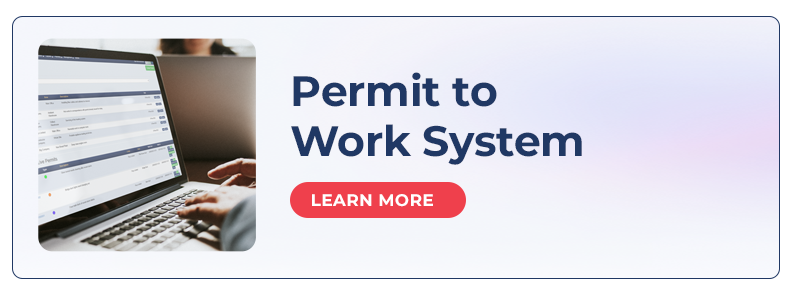The Gap Between Paper and Reality
Permit to Work systems have existed for decades. On paper, they are designed to control high-risk work, ensure hazards are understood, and confirm that the right people are authorising the right activities at the right time.
In practice, many organisations still rely on paper-based permits that reflect intent rather than reality.
As sites become busier, work becomes more interconnected, and teams more distributed, the risk is no longer just the task itself, it's the lack of real-time visibility and coordination across operations. This is where Digital Permit to Work systems move from being a digital convenience to a leadership necessity.
Safety Leadership in a Connected, High-Risk World
Since founding Pisys in 1988 we've seen massive changes in the business landscape. Modern operations face pressures that did not exist to the same degree when paper PTW systems were first introduced:
- Multiple contractors working simultaneously
- Complex asset lifecycles and ageing infrastructure
- Remote approvals and reduced on-site supervision
- Increased regulatory scrutiny and accountability
- Expectations of real-time insight, not end-of-shift reporting
In this environment, safety leadership is no longer about having procedures, it is about knowing what is happening right now.
A Digital Permit to Work system provides leaders with a live operational picture of risk, not a retrospective snapshot.
From Administrative Control to Active Risk Management
Traditional PTW systems often become administrative exercises, or a checklist completed to “allow work to proceed”.
A well-implemented Digital Permit to Work system changes that dynamic entirely.
By embedding risk assessments, isolations, competence checks, and SIMOPS controls into a single digital workflow, Digital PTW systems turn permits into active risk management tools, not static documents.
This enables organisations to:
- Prevent conflicting work before it starts
- Ensure hazards and controls are understood, not assumed
- Enforce consistency across sites and teams
- Intervene early when conditions change
The result is can be a shift from reactive to predictive safety management.
Visibility Is the New Safety Currency
One of the most significant advantages of Digital PTW is visibility.
Real-time dashboards allow supervisors, safety teams, and leadership to see:
- Which permits are active
- Where high-risk work is taking place
- Who is responsible
- What controls are in place
This visibility is essential for managing SIMOPS, responding to changing site conditions, and making informed operational decisions.
Without it, leaders are effectively managing risk 'in the dark'
Digital Accountability and the End of “Assumed Control”
In the event of an incident, organisations are increasingly expected to demonstrate not just that processes existed, but that they were properly implemented.
Electronic Permit to Work systems provide:
- Time-stamped approvals
- Clear ownership at every stage
- Automatic audit trails
- Evidence of competence and authorisation
- This level of traceability supports compliance, but more importantly, it reinforces a culture where accountability is clear and shared.
Data as a Safety Asset, Not a By-Product
Paper permits generate very little usable insight. Once filed away, their value is largely lost. without a great deal of effort to manually analyse their content.
Digital Permit to Work systems, by contrast, create structured data that can be analysed over time to:
- Identify recurring hazards
- Understand permit bottlenecks and delays
- Improve planning and coordination
- Strengthen future risk assessments
For organisations committed to continuous improvement, this data becomes a powerful tool for learning, not just reporting.
Digital PTW as Part of a Broader Safety Ecosystem
Leading organisations no longer view Permit to Work in isolation. It is increasingly integrated with:
- Contractor management
- Asset and maintenance systems
- Risk assessment and isolation management
- Incident and audit platforms
- A Digital PTW system becomes a central control point within a wider digital safety ecosystem — supporting safer, more efficient operations at scale.
Adopting Digital PTW Is a Leadership Decision, Not an IT Upgrade
Moving to a Digital Permit to Work system is not just about going paperless.
It is about:
- Gaining real-time control of high-risk work
- Enabling informed, timely decision-making
- Strengthening accountability at every level
- Turning safety data into operational insight
For organisations serious about safety, resilience, and operational excellence, Digital PTW is no longer an optional enhancement, it's a strategic leadership tool.
The Future of Safe Work Management
The shift to digital safety systems is no longer optional—it’s essential. As workforces become more distributed and operations more complex, organisations need reliable tools that connect people, processes, and data in real time.
A digital permit to work system provides that foundation: eliminating delays, reducing risk, and giving management the oversight needed to make confident, informed decisions.
At Pisys, we’re helping companies across the globe make that transition - simplifying safety, boosting productivity, and ensuring every job gets done right, every time.
